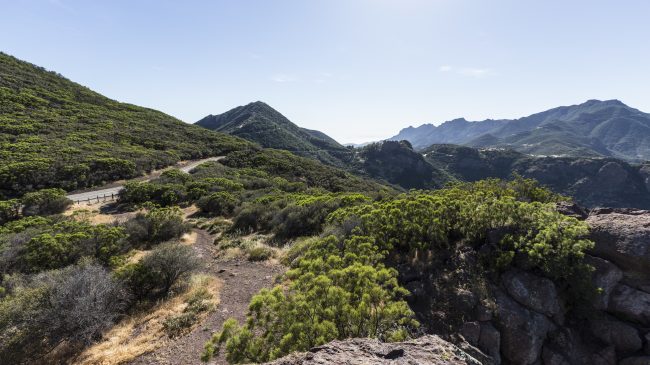Sen. Dianne Feinstein and Rep. Adam Schiff, D-Burbank, recently reintroduced the Rim of the Valley Corridor Preservation Act, which would more than double the size of the Santa Monica Mountains National Recreation Area. The bill is a bad idea for several reasons, not least the fact that the national park system has a maintenance backlog of over $11 billion. Rather than acquiring more land, the park system should focus on improving the care and maintenance of existing parks.
The Santa Monica Mountains National Recreation Area currently covers 153,000 acres. Schiff and Feinstein want to expand it to include an additional 191,000 acres, adding the mountains from several valleys, including San Fernando, Simi, Santa Clarita, La Crescenta and Conejo. Some of these lands are already regulated by local and state agencies but Schiff and Feinstein would like them to be directly managed by the National Park Service.
Schiff’s office says that giving the National Park Service direct oversight would help “implement capital improvements (i.e. trails, roads, facilities for public enjoyment), financially contribute to projects that protect important natural resources, and acquire land through donation, exchange, or purchase from will sellers.”
Adding lands to parks increases maintenance costs and other obligations but doesn’t usually increase revenues because “most parks rely on public subsidies to cover their operating costs,” a Reason Foundation report found. And a study from the Property and Environment Research Center noted, “Typically, new parks come with little or no additional funding.”
The Santa Monica Mountains National Recreation Area draws about 900,000 recreational visitors annually who generate an estimated $39 million in regional spending. And yet, the National Park Service has already deferred $11 million worth of maintenance that the area needs. The area’s maintenance backlog has increased $2 million since 2015.
With President Donald Trump’s 2018 budget proposal calling for a nearly $400 million cut to the parks budget, and California facing more than $1 billion of deferred maintenance costs for its own park system, the solution is not to transfer liabilities to the National Park Service or expand the Santa Monica Mountains National Recreation Area. The focus should be on improving the management of existing parks and land in sustainable ways.
A better approach would be to use public-private partnerships, which have proven to be an effective conservation tool in California, transforming underfunded state parks into self-sustaining public environmental assets. For example, in 2012 California successfully turned over the operation of four state parks to for-profit park management companies. The state signed a five-year lease with a Utah-based recreation company to take over the campground and day use operations at three Central Valley recreational areas (Turlock Lake, Woodson Bridge, and Brannan Island). It also handed over operation of the Limekiln State Park in Big Sur to California-based Parks Management Company. In doing so, the costs of operating and maintaining these parks was transferred from taxpayers to the private operators, while ensuring that the land is protected and managed according to the long-term vision of voters and officials.
California faces the highest maintenance backlog at the state park level in the country, and that would only be made worse if the Rim of the Valley Corridor Preservation Act were passed.
The National Park Service celebrated its 100th-anniversary last year to great fanfare. But decades of misplaced priorities have left national parks in a state of neglect. Instead of adding land, it is time to shift the way parks are managed. A financially sustainable public-private partnership model can ensure that the beauty and splendor of state and national parks can continue to be appreciated for another 100 years and more.
